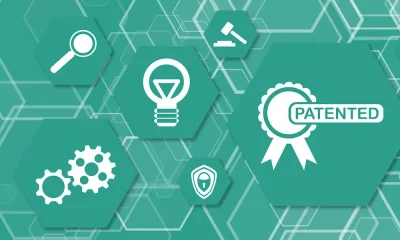Innovation
Important Trends in eCommerce

Are you finding it hard to keep up with trends in eCommerce? It’s constantly changing, with new technologies and trends always emerging. From the rise of mobile shopping to the increasing use of artificial intelligence, many exciting developments exist. In this business blog, we’ll explore some trends in eCommerce businesses and their consumers’ use today.
Trends in eCommerce
Your eCommerce could be using these latest trends, including:
- Mobile shopping
- Voice commerce
- AR and VR
- AI-powered chatbots
- Visual Search
- Subscription-based models
Mobile Commerce (m-commerce)
Mobile shopping is the go-to for younger shoppers like Gen Y and millennials. Mobile commerce has become a significant trend with the increasing usage of smartphones.
Retailers are optimizing their websites and applications for mobile devices to enhance the user experience and facilitate convenient shopping on the go. Businesses may also want to consider developing a mobile app and using mobile app marketing to make the shopping experience even more seamless for customers.
Personalization With AI
E-commerce platforms leverage AI and machine learning algorithms to provide personalized shopping experiences. By analyzing user data, such as browsing history, purchase behavior, and preferences, retailers can offer tailored product recommendations, personalized offers, and targeted advertisements.
For example, a clothing retailer could use AI to suggest outfits based on a customer’s past purchases and browsing history. This improves the customer experience and increases the likelihood of a sale. We can expect to see even more personalized and customized eCommerce experiences as AI technology advances.
Voice Commerce
Voice-enabled shopping through virtual assistants like Amazon’s Alexa, Google Assistant, and Apple’s Siri is gaining popularity. Users can make purchases, reorder items, and receive product recommendations using voice commands, creating a more convenient and hands-free shopping experience. Voice commerce also known as V-Commerce, is driven by the convenience of hands-free shopping and the ability to quickly reorder frequently purchased items.
As technology improves, we expect to see even more advanced voice commerce capabilities, such as personalized recommendations and voice-activated payments.
Augmented Reality (AR) and Virtual Reality (VR)
AR and VR technologies are being used to enhance the online shopping experience. Retailers are employing these technologies to allow customers to visualize products virtually, try on clothing virtually, or effectively place furniture in their homes before purchasing.
Social Commerce
Social media platforms are e-commerce marketplaces. Retailers use social commerce features to directly sell products through Instagram and Facebook.
With billions of social media users, the ecommerce marketplace allows for a seamless shopping experience for customers who can browse and purchase products without ever leaving their favorite social media app. As social media continues to dominate our daily lives, we can expect to see even more integration between social media and eCommerce.
Social media influencers also play a significant role in promoting products and driving sales.
AI-powered Chatbots
AI-powered chatbots are being used to improve customer service in e-commerce. Chatbots can handle customer inquiries, provide instant support, offer product recommendations, and guide users through purchasing. Natural Language Processing (NLP) algorithms enable chatbots to effectively understand and respond to customer queries.
Supply Chain Optimization
AI is utilized to optimize various aspects of the supply chain in e-commerce. Machine learning algorithms help retailers forecast demand, manage inventory more efficiently, optimize shipping routes, and automate warehouse operations, leading to improved logistics and reduced costs.
Visual Search
Visual search technology allows users to search for products using images instead of text. By uploading an image or taking a photo, users can find similar products or visually identify specific items, making product discovery more seamless and intuitive.
Subscription-based Models
Subscription-based e-commerce models, such as subscription boxes or recurring product deliveries, have gained popularity. Consumers can subscribe to receive curated products regularly, creating a predictable revenue stream for businesses while providing convenience to customers.
Final Thoughts
Ecommerce will continue to evolve with new trends. Your business can stay informed and relevant by following this regularly updated article.









